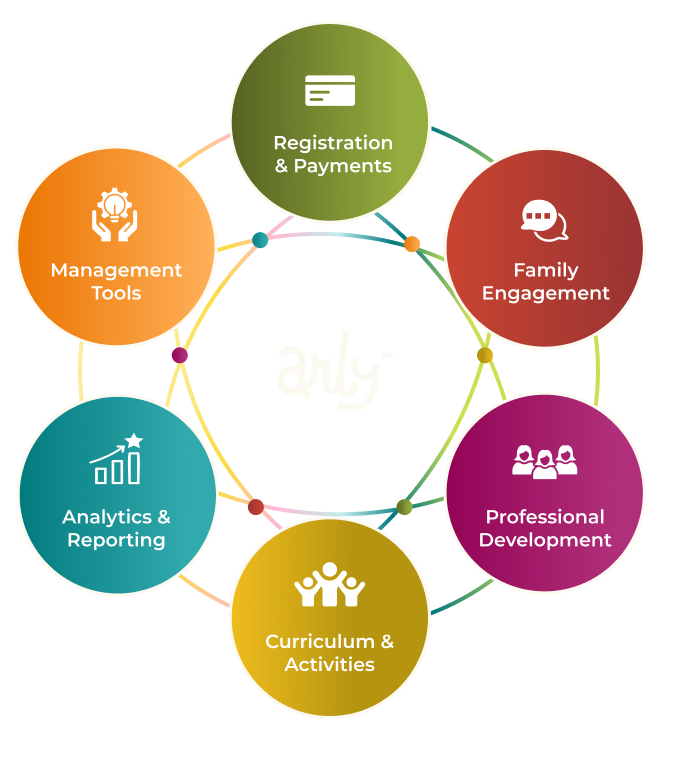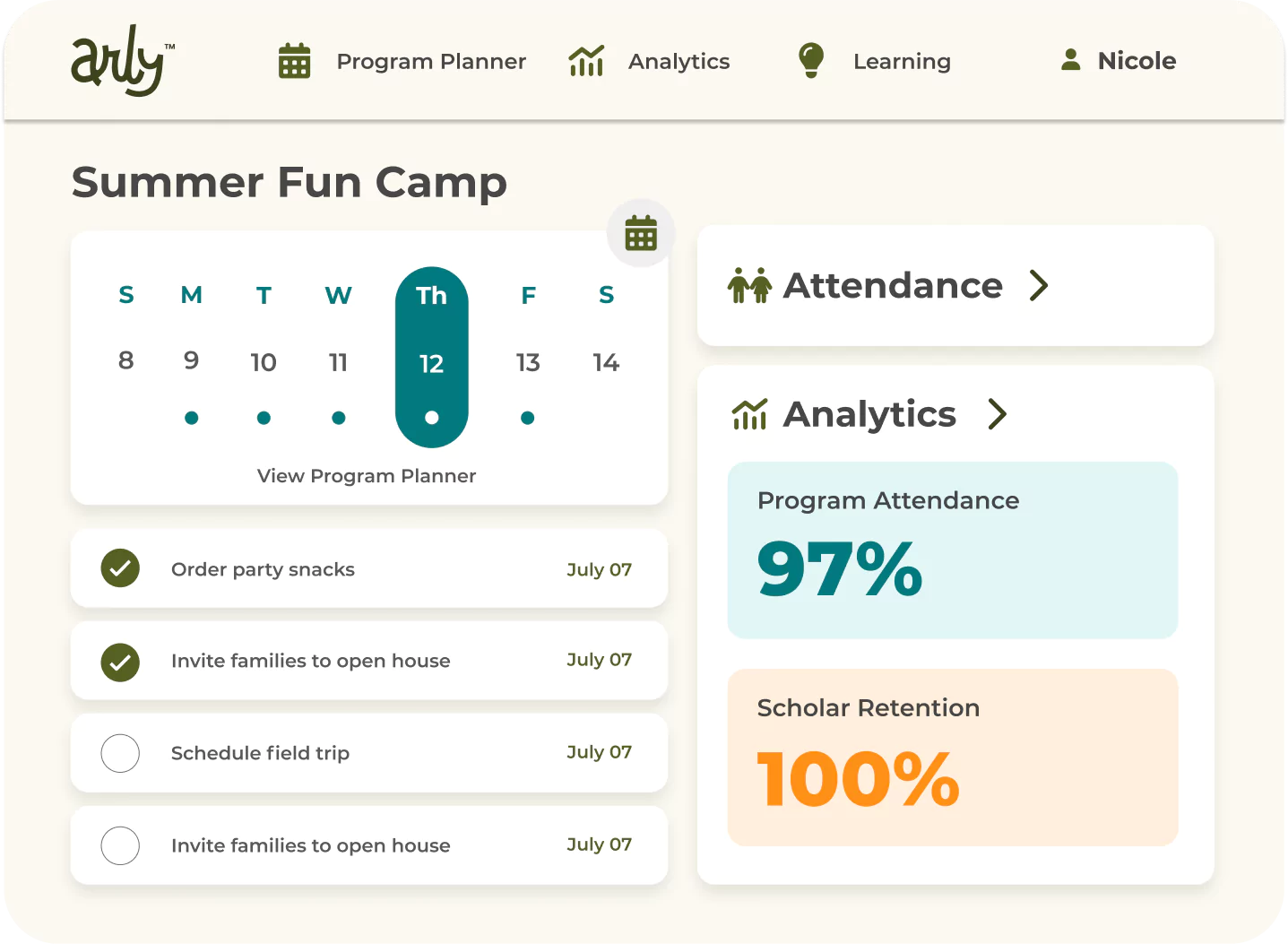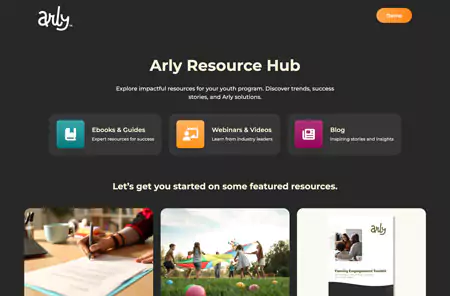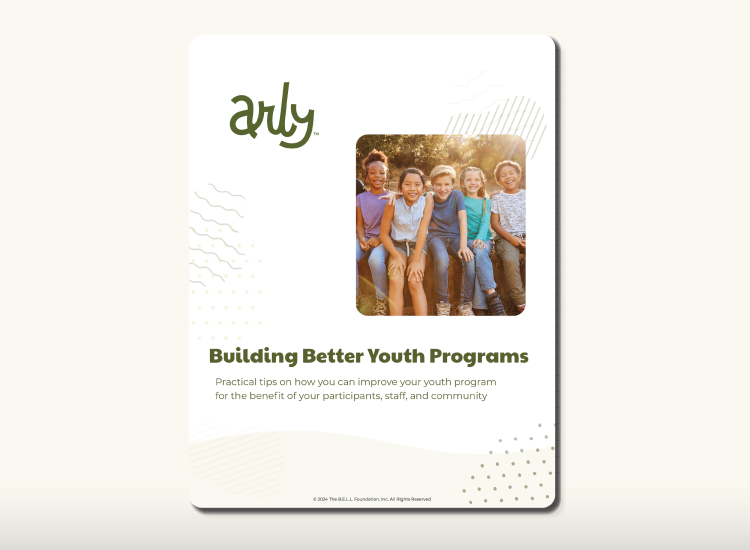4 Ways to Build a Positive Learning Environment
By Arly Communications on May 18, 2022
Culture and climate set the tone of any youth program. At Arly, we recommend that programs intentionally focus on building a positive culture and climate. With 30 years of experience, we know that kids need to feel safe and connected to be able to do their best thinking and learning, and we have the research to back it up.
Children should feel welcome and comfortable, part of a supportive community where they feel they belong—an environment where they feel seen and respected by people who believe in them.
Did you know that a persistently positive culture and climate have been linked to positive youth development? A positive approach improves academics and social skills, health, attendance, graduation rates, and teacher retention.
Developing objective measures to cultivate a positive learning environment can help you set clear goals, then assess your progress toward making these plans a reality.
1. Use research to get it right.
Cultural norms, personal experiences, and numerous other factors can influence program coordinators’ intuitions about how to structure effective programs. But the most effective programs are evidence-based, drawing on proven science to support learning and engagement.
Your goal should be to nurture lifelong learners with a growth mindset who enjoy the process of learning, not just the end product. Evidence-based practices look not just to the immediate challenges but also to the long-term goal of cultivating interest, curiosity, and engagement, all of which offer more opportunities to excel.
2. Build the skills your kids need.
Rewards and consequences can motivate kids over the short term. But ultimately, youth success hinges on intrinsic motivation that keeps kids committed to success even when there’s not an adult telling them what to do. Positive learning environments cultivate key skills, including:
- 21st Century Learning Skills: Soft skills are inseparable from academic ones. 21st Century Skills include learning, literacy, and life skills that should be integrated into your program.
- Intrinsic motivation: A growth mindset encourages kids to keep trying because they understand that skill comes from practice, not anything innate. This can boost intrinsic motivation, helping them persist when they encounter difficulties.
- High expectations: Kids rise or fall to the expectations of the adults they respect. Help them build skills by setting clear, specific, and high expectations.
3. Nurture positive practices.
Encourage conscious, deliberate cultivation of a positive environment. These strategies can help:
- Positive reinforcement: Reinforce the behavior you want to see by noticing and rewarding it and building reinforcement structures into the curriculum.
- Clear teaching styles: Assertive teachers establish clear, specific expectations, follow through on consequences, and nurture meaningful relationships with the kids they support.
- Positive discipline: Teach young people to become responsible, respectful, and resourceful members of their communities. Positive discipline teaches important social and life skills in a manner that is encouraging for both children and adults.
- Responsive environment: The program environment should be child-centered and have a strong focus on building emotional intelligence. Use evidence-based practices designed to create a safe, joyful, and engaging environment for participants and staff.
- Restorative practices: Everyone makes mistakes, and learning from them is key. Teach restorative practices through modeling and direct instruction, so kids can fix relationships, reduce antisocial behavior, and begin to restore order in their immediate surroundings.
4. Focus on community.
A positive learning environment does more than just support children. It also creates a positive community with far-reaching effects that extend well beyond this experience. Your program can be a valuable asset to your staff and your community. Some strategies to bolster a strong community focus include:
- Prioritizing educator wellness: Instructors must feel supported and cared for too. Foster an environment that urges self-care, open communication, and professional development.
- Building a nurturing environment: Staff should show care, compassion, and concern for kids. The program must build empathy by first showing empathy.
- Balancing behavior and classroom management: Teachers, staff, and admins alike should cultivate a welcoming, organized environment by minimizing chaos and distraction. They must also work with individual children to encourage positive behavior and minimize problem behaviors.
Program leaders, educators, and staff can work together to build positive learning environments. With the right structural supports in place, your program can become a welcoming place for kids to learn and practice new skills. Reach out today for more information on how Arly can make a positive impact on your program, so you can focus on elevating the potential of the youth you serve.






%20(70).png)

%20(1320%20x%20980%20px)%20(660%20x%20490%20px)%20(600%20x%20350%20px)%20(1).png)
%20(1320%20x%20980%20px)%20(660%20x%20490%20px)%20(600%20x%20350%20px)%20(2).png)
%20(20).png)